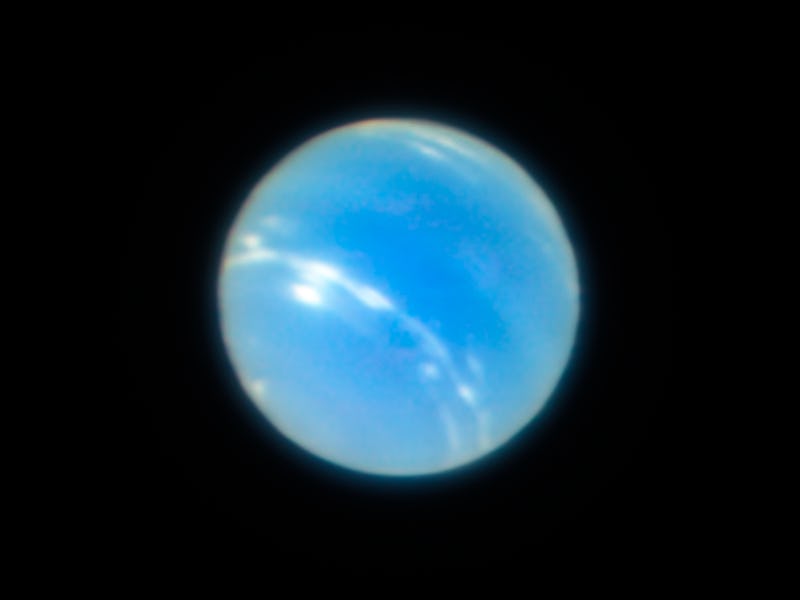Neptune in opposition: How to see the planet in the night sky this week
The giant planet will be at its closest point to Earth on Friday, making it visible with minimal equipment.

CELESTIAL OBJECTS COME AND GO FROM OUR VIEW IN THE NIGHT SKY. Whether it be the Full Moon, a meteor shower, or just the best night to see Mars, we're here to direct your eyes skyward and tell you to look up and appreciate the wonders of space right here on Earth.
This week, we're inviting you to marvel at the beauty of the planet Neptune as it appears at its brightest in the night sky on Friday.
Neptune is the farthest known planet from the Sun, some 2.7 billion miles from Earth. At such a distance, it takes Neptune 165 Earth years to orbit the Sun.
The third most-massive planet of the Solar System, Neptune is an ice giant shaped by supersonic wind, a freezing cold and dark world. The planet has at least five main rings and four more ring arcs, and at least 14 known moons.
Neptune and Earth will be the closest together for a year.
On Friday, September 11, this icy giant will be at its closest distance to Earth.
But that doesn't mean too close. Unfortunately, Neptune is the only giant planet of the Solar System that cannot be seen with the naked eye.
But on Friday, you can observe Neptune in the night sky using just a pair of regular binoculars, as the planet comes in opposition to the Sun.
A planet coming in opposition means that they are directly opposite to the Sun, perfectly aligning with the Earth and the host star. As our planet flies directly between the Sun and Neptune, the icy giant planet will be at its closest possible point to Earth, and it will remain at this relatively close distance for the rest of the year.
In terms of position, Neptune will be at about 180 degrees from the Sun in the sky.
Voyager 2 took this picture of Neptune in 1989.
Neptune will rise from the East around sunset on Friday, appearing in front of the constellation Aquarius the Water Carrier, and next to the star Phi Aquarii. But Neptune will appear much fainter than the star, since the planet is about as faint as the dimmest star you can see in the night sky.
Even with binoculars, you may still need to squint a little, or use a basic telescope to help you see Neptune. But the Moon is in your favor: the Moon is currently a waning crescent, so the night sky will allow for optimal viewing.
If you live in a crowded city like New York, it is best to get as high up as possible in order to minimize light pollution. So going on a balcony or rooftop is highly recommended.
You also want to block out any light coming from screens of electronic devices or flashlights and allow your eyes to get accustomed to the darkness for around 30 minutes before you look up.
Happy viewing!